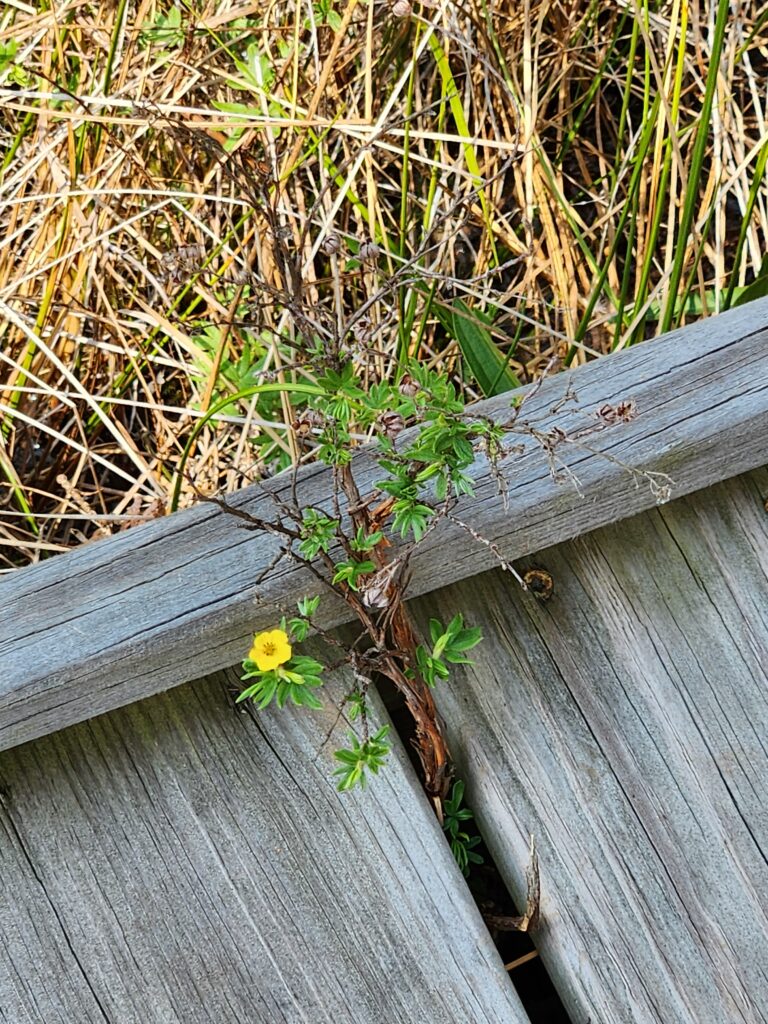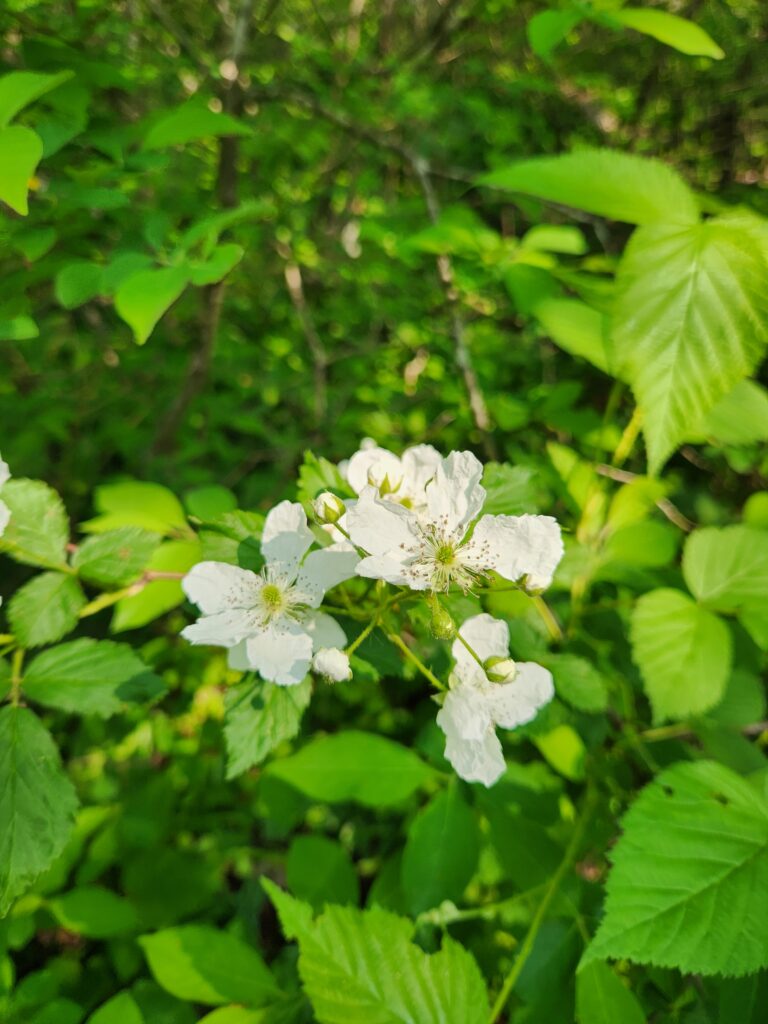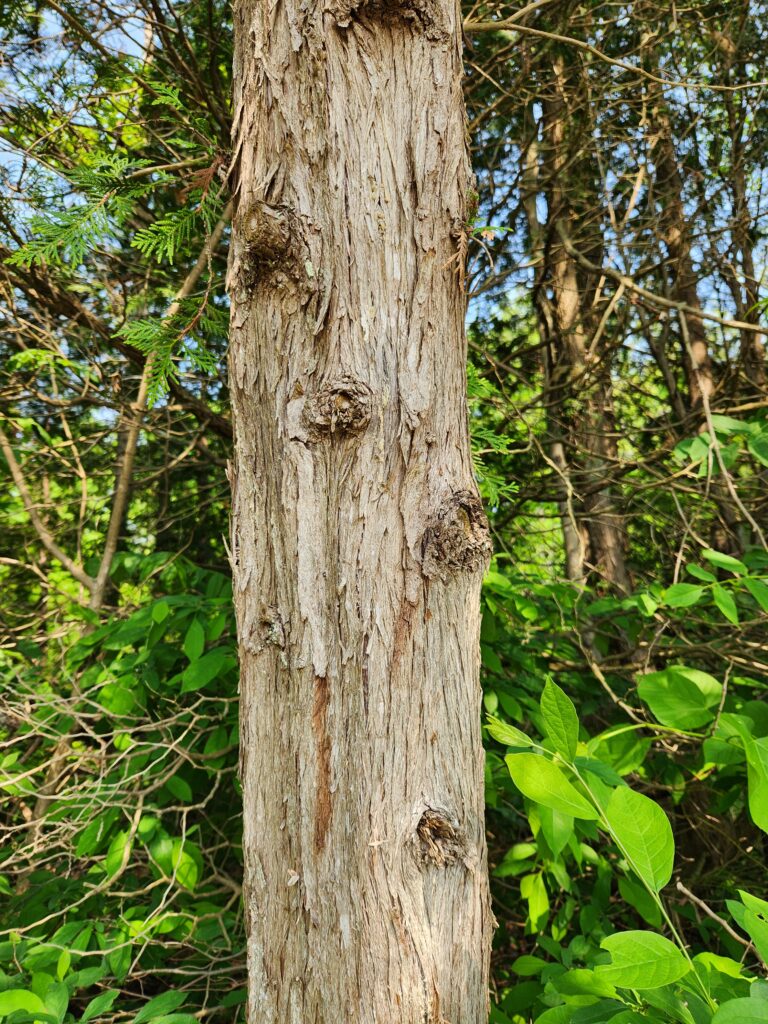Cedar Bog
Cedar bog is not actually a bog, but a more unique habitat called a fen. While bogs are compromised by stagnated and warm waters, the waters from fens are mainly fed by aquifers underground, waters that are cool and flushed via flowing streams. Cedar bog sits on the ancient Teays river valley, filled in by sand and gravel. As water flows up through said substrate, the limestone in between gets dissolved, causing the water to be slightly alkaline.
Rosaceae members
Shrubby cinquefoil, Dasyphora fruticosa

Shrubby cinquefoil is a bush native to the Northern US and into Canada. The bark is shreddy, flowers buttercup-yellow, and leaves alternate and pinnately compound. They produce an achene fruit that overwinters.
Shrubby cinquefoil | The Morton Arboretum
Common blackberry, Rubus allegheniensis

With habitats in woodlands and forests, the common blackberry is a thorny shrub native to the region. They flower in late spring, attracting many bees and butterflies, and fruit in summer that are eaten by many mammals. Only shoots two or more years old will produce fruit.
Conservative plants and ash species
Shooting star, Dodecatheon meadia (CC: 7)

Roundleaf sundew, Drosera rotundifola (CC: 7)
Northern white-cedar, Thuja occidentalis (CC: 9)


Bog birch, Betula pumila (CC: 10)

Green ash, Fraxinus pennsylvanica (CC: 7)

Green ash is a deciduous tree with opposite and pinnately compound leaves. The leaflets are attached to the stalk by distinctly downy petioles.
Black ash, Fraxinus nigra (CC: 3)

Like all ashes, the leaves of the black ash are opposite and pinnately compound. However, this tree is differentiated by the lack of petioles for the leaflets.
Coefficient of Conservatism
Marsh-marigold, Caltha palustris
Coefficient: 6 WET: OBL (obligate wetland plant)
Virginia Iris, Iris viginica
Coefficient: 6 WET: OBL
Spicebush, Lindera benzoin
Coefficient: 5 WET: FACW (facultative wetland plant)
Golden ragwort, Packera aureus
Coefficient: 4 WET: FACW
Skunk cabbage, Symplocarpus foetidus
Coefficient: 6 WET: OBL
Swamp buttercup, Ranunculus septentrionalis
Coefficient: 4 WET: FAC (facultative, equally likely to occur elsewhere)
Swamp forest FQAI: I = 31/√6 = 12.7
Shrubby cinquefoil, Dasyphora fruticosa
Coefficient: 10 WET: FACW
Round-leaved sundew, Drosera rotundifolia
Coefficient: 7 WET: OBL
Bog birch, Betula pumila
Coefficient: 10 WET: OBL
Marsh valerian, Valeriana uliginosa
Coefficient: 10 WET: FACW+
Poison sumac, Toxicodendron vernix
Coefficient: 7 WET: OBL
Lesser bladderwort, Utricularia minor
Coefficient: 8 WET: OBL

